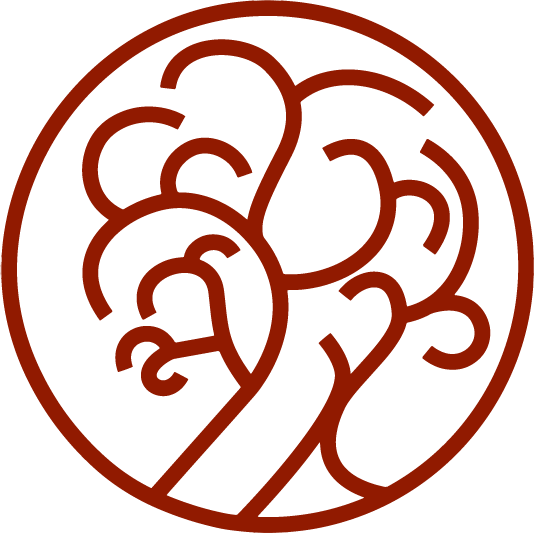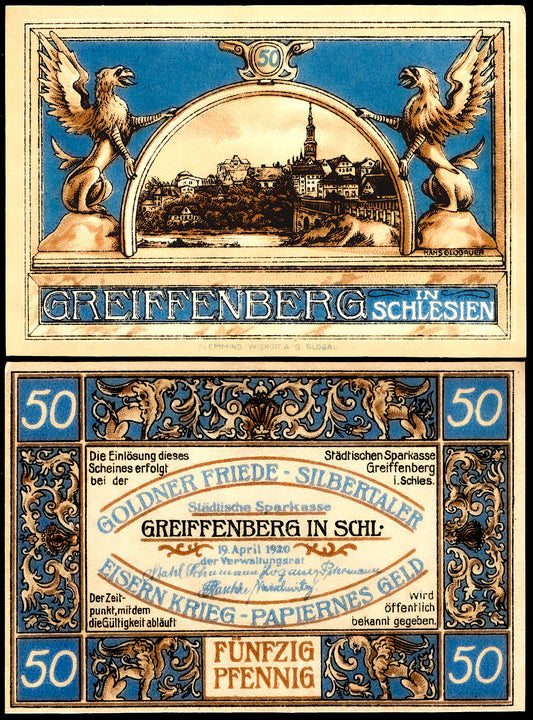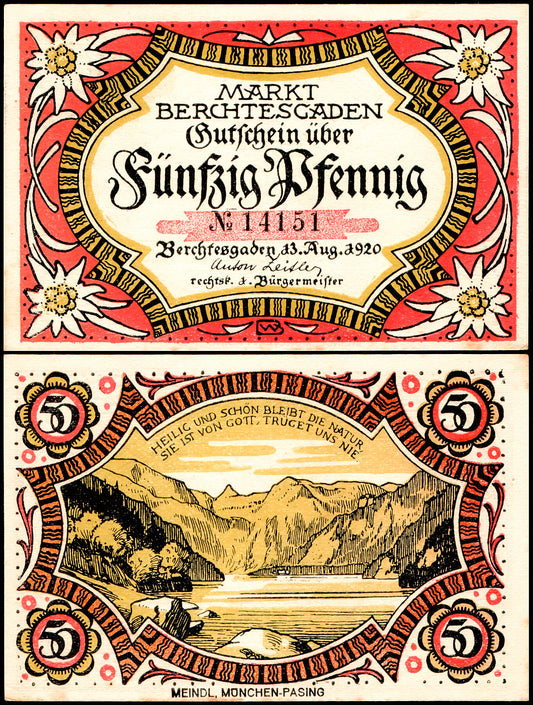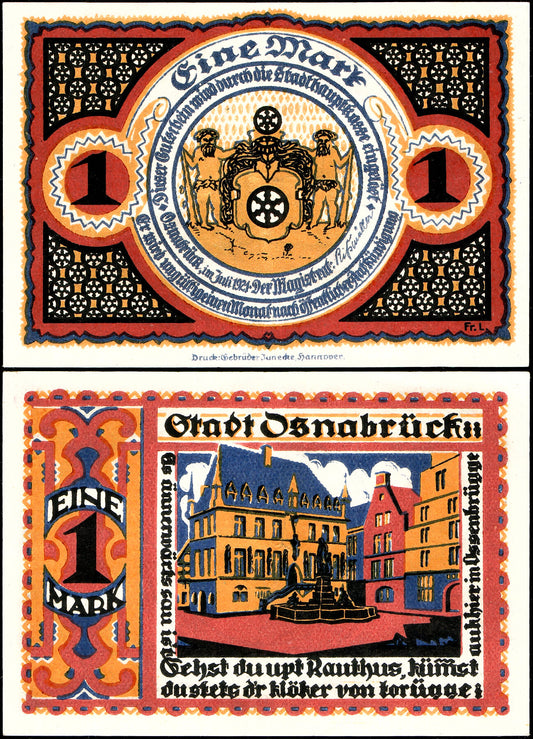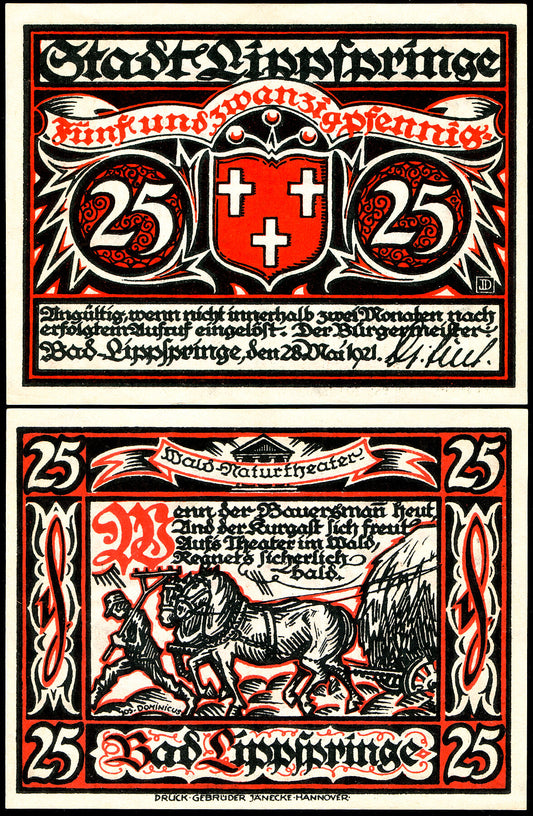Collection: German 1920s Banknotes
A collection of prints based on banknotes of several German towns in the early 1920s. The art is simple, but organised in a beautiful way, and here is reproduced in vibrant colours.
During the 1920s, Germany was in the midst of an economic crisis known as hyperinflation. This was caused by a number of factors, including the burden of reparations placed on Germany following World War I, as well as the government's policy of printing more money to pay its debts.
As a result of hyperinflation, the value of the German Mark plummeted. In 1922, one US dollar was equal to around 9 Marks. By 1923, the exchange rate had skyrocketed to 4.2 trillion Marks to one US dollar. This made it nearly impossible for people to afford basic goods and services, as prices were rising rapidly.
To address the hyperinflation crisis, the German government implemented a series of measures, including the introduction of a new currency, the Rentenmark, in November 1923. The Rentenmark was pegged to a basket of goods and was backed by a fund of land and industrial property. This helped to stabilize the currency and bring an end to hyperinflation.
In 1924, the Rentenmark was replaced by the Reichsmark, which was used as the official currency of Germany until the end of World War II. The Reichsmark was also pegged to a basket of goods and was backed by gold, which helped to maintain its value.
One pfenning was equal to one hundredth of a Mark. In other words, 100 pfenning were equal to one Mark. The pfenning was commonly used for small purchases and was often used in combination with other denominations of the Mark to make larger purchases.
The pfenning was phased out when Germany adopted the Euro as its official currency in 2002. The Euro is now the official currency of Germany and is used throughout much of Europe.
